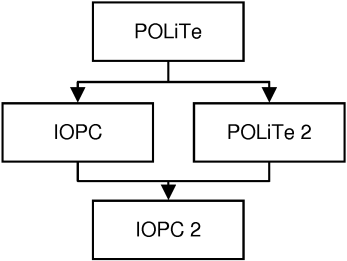Today, object-oriented languages represent standard instruments for business application and information system development. These systems usually operate with large amounts of persistent data stored in relational database management systems (RDBMS). Data in RDBMSs are however represented differently from data in the application layer. Developers need to do a lot of programming overhead to deal with this so-called impedance mismatch every time they want to move data between relational databases and application-level object models.
Object-oriented database management systems (OODBMS) try to mitigate the impedance mismatch for example by providing navigation using pointers instead of using joins as in the relational databases. Despite their advantages the object-oriented databases are not as widely used as the relational databases. Mostly because of the lack of various tools like reporting, or OLAP[1] and due to the industry standards pushed by the big players - Oracle, Microsoft and IBM. Moreover many of RDBMS creators already addressed the impedance mismatch issue by incorporating object-oriented features into their products. Doing it a new kind of database management system, object-relational database management systems (ORDBMS), were created.
Another approach to bypassing the impedance mismatch is to isolate the developer from direct database data manipulation at application level. This goal can be accomplished by using an object-relational (O/R) mapping layer. This layer transparently maps relational data into application object model and vice versa. The O/R tools usually offer additional services like object querying or caching.
Current information systems are often written in high-level languages like Java or C#. There exist established O/R mapping tools for these environments. Well-known is Hibernate[2] for Java and nHibernate[3] relatively new ADO.NET Entity Framework from Microsoft[4] for C#.
O/R mapping tools for such languages can use their feature called reflection. Reflection allows a program to find out information about its own data model and to modify it at run-time. The O/R mapping layer then can easily inspect the structure of the classes being mapped, and based on this information, it can transparently load or save data from/to the underlying database. Languages that support reflection are often referred to as reflective languages.
Another frequently used language in this area is C++. Unfortunately, C++ is not a reflective language, so the building of O/R mapping layer is a bit more difficult. The goal of this thesis is to develop such a mapping library, which should work as transparently as possible. Second goal is to examine possibilities the ORDBMSs can provide to an O/R mapping library.
The resulting library implemented as part of this thesis uses advantages of three previous projects. Their common predecessor, the POLiTe library[5], was developed as a part of doctoral thesis [02]. Two follow-ups came after this work as master theses focusing on different areas of the O/R mapping concept:
Master thesis [03] (called POLiTe 2 in further text) addressed mainly the performance and notably enhanced functionality of the object cache. It also added multithreading support and made the interface of the library safer to use.
Master thesis [04] (IOPC[6]) designed a new persistence layer. The main advantage of this new layer is transparent application development without the need to additionally describe classes in it. It uses OpenC++ source-to-source translator to analyze and prepare the source code for object-relational mapping. Even though brand-new interface was created, the library still supports classes written in the POLiTe-style.
The IOPC 2 library provided in this thesis not only merges the development back into one product offering most of previously implemented features without their drawbacks. Furthermore, the library implements new ideas like standalone reflection mechanism, additional mapping type using object-relational database abilities and many other.
In the following section we will introduce basic concepts of the object-relational mapping, discuss new features of ORDBMSs and describe requirements and goals of the IOPC 2 implementation. Then, in the third chapter, evolution of the IOPC/POLiTe libraries will be presented in the context of requirements placed and their features will be compared with each other. Chapter 4, Basic concepts of the IOPC 2 library describes basic concepts of the IOPC 2 implementation whereas Chapter 5, Architecture of the IOPC 2 library contains detailed architectural information. In conclusion we will evaluate the achievements of this thesis and will propose areas for further development. Appendix contains user guide.
Enclosed DVD contains library source code with examples, binary distribution for Linux, documentation and in the first place a VMWare image with pre-installed environment. The image contains Ubuntu Linux, freely distributable Oracle XE database, GCCXML and all other IOPC 2 dependencies. The library source code and source code of the examples is stored in the image as an Eclipse CDT project. So all the examples can be modified, compiled and run right away.
